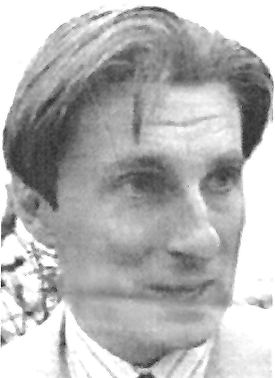Gravity Modification
Gravity is an odd phenomena, for many reasons but mostly because it's still classical. What does that mean? Well all of the other forces at a distance, magnetism, electrostatics and intranuclear forces have been included into Quantum Mechanics, but not gravity. No one has found a graviton, the quantum particle that might produce gravity. Einstein's formulations describe gravitational interactions on huge classical mechanical scales not tiny quantum mechanical scales. Something in our understanding is missing.
From a technological point of view gravity stands out because we can't block it out, we can't increase it, and we can only use it passively. Or so the vast majority of experiments and the overwhelming weight of scientific opinion would seem to indicate. Does that mean we should stop trying to modify gravity - of course not....
In 1999/2000 I worked in Sheffield, England in the Electronic Engineering Department's Solid State group with Dr. Clive Woods on a BAE Systems Project Greenglow Contract.
Greenglow was BAE's fund for supporting work on what might loosely be called future technologies, essentially investigations into the properties of gravity that might just one day enable the kind of propulsion systems that sci-fi writers have always dreamed of.
My background was in high temperature superconductors and specifically YBCO (Yttrium Barium Copper Oxide with a critical transition temperature of 95K) a large disk of which formed the basis for Evgeny Podkletnov's controversial experiments which are purported to show gravity modification. Hence my recruitment for Dr. Woods's Podkletnov follow up.

Evgeny (Eugene) Podkletnov
(sorry about the quality it's a scan from the Sunday Times -
"This Man Claims he can Defy the Laws of Gravity" S.T. August
4 2002)
Now a quick web search will reveal any
number of oddball experimental setups that claim to influence gravity,
most involve gyroscopes, high electric fields or both. What makes Dr.
Podkletnov's experiment, which also involves high fields and things spinning,
different is that:
a) He was a respected scientist with a solid publication record behind
him before his gravity experiments and
b) His experiment was properly written up and published in a peer review
journal - Physica C
For a comprehensive description of Podkletnov's
work and related experiments try Quantum
Cavorite, but essentially the experimental conditions which achieved
the gravity modification are:
A large (8 inches plus) disk of YBCO, is levitated (levitation by magnets
because of the superconductor's rejection of magnetic field is one of
the classic superconductor demonstrations) in an high frequency field,
and then rotated at up to several thousand rpm. Under perfect conditions
Podkletnov reports that this produces a reduction in the gravitational
pull felt by objects suspended above the superconductor of one or two
percent.
At an open seminar in Sheffield Podkletnov
went on to state that the effect was additive and depended on spin direction
i.e. stacked disks rotating in the same direction increased the effect
and counter rotating disks cancelled each other out. This meant that with
two disks he had obtained a gravity reduction of 5%.
BAE through Dr. Woods, NASA and, according to the Sunday Times, Boeing were all trying to reproduce Podkletnov's results, have any succeeded? Not that they have admitted.
What about my involvement in Sheffield, did we see anything? Probably not.
The Podkletnov experimental conditions are very difficult to achieve. Simply producing a large disk of the fragile ceramic superconductor with the necessary properties is a challenge, let alone keeping it cool while using electromagnets to levitate it in an ac field, as for rotating it at the same time..!
We pursued a programme of testing experimentally achievable but incomplete subsets of the Podkletnov conditions, for example, mechanically rotating smaller disks of superconductor in static fields, to see if any of these could produce a smaller gravity effect. This, despite Podkletnov's assertion that only the complete system will produce results, seemed to us to be a reasonable way forward, if for no better reason than that it allowed us incrementally to develop expertise in the techniques needed to reproduce Eugene's work. And of course our obviously serious interest allowed us to tempt the man himself across from Finland to talk to us, probably the most important breakthrough of the project.
As I've said we did not get any positive results with our subsets, there was one series which when I reviewed it on video may well have been producing results but nothing that an impartial observer would not describe as noise. Hope over scientific objectivity I suspect. And that brings me to what I thought was the most interesting part of my involvement, the reaction of other researchers.
When you accept a position in such a controversial field you worry as to how your peers will receive you, and yet I found the reaction overwhelmingly positive. Perhaps it was because we were based in an engineering department rather than being physicists with a vested interest in defending Einstein, but everyone I spoke to wanted us to succeed. Scientists aren't the dry old things, they want to see science shaken up with something new and out of left field. How can science fiction become science fact without scientists?
And the future of the Greenglow project? Unfortunately as our contract ended British Aerospace absorbed half of GEC and by the time BAE Systems had emerged from the other side of such a huge upheaval with more Greenglow money Clive Woods had accepted a Professorship in the States. Hopefully, he will be able to get closer to Podkletnov's full conditions there, and hopefully he will confirm a Podkletnov effect. I've got my fingers crossed and so I suspect have many disinterested scientific observers.
Steve Cooke, Jersey 2004